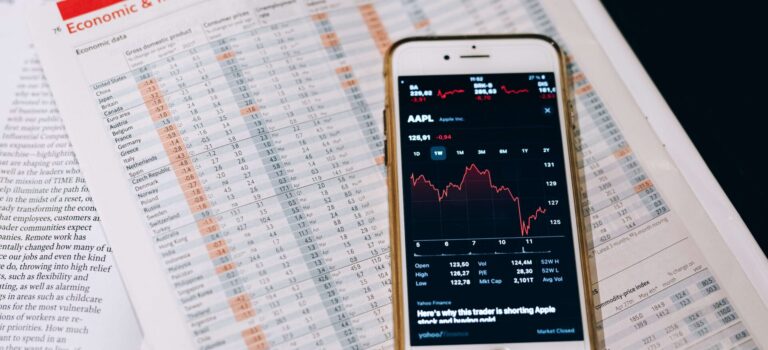The Investor Guide to Fidelity Funds for November 2023 is AVAILABLE NOW! November Data Files Are Posted Below Market Perspective: Middle East Tensions Spook Stocks Equities dipped in October after bonds […]


The Investor Guide to Fidelity Funds for November 2023 is AVAILABLE NOW! November Data Files Are Posted Below Market Perspective: Middle East Tensions Spook Stocks Equities dipped in October after bonds […]
Click Here to view today’s Global Momentum Guide The Russell 2000 Index gained 7.56 percent last week, the Nasdaq 6.61 percent, the S&P 500 Index 5.85 percent, the Dow […]

The last few trading days were full of intensity as both a Fed interest rate decision and a nonfarm payroll (NFP) report were released. However, the first major news releases of the week came on Tuesday when the Employment Cost Index (ECI) for the previous quarter was made public and revealed that labor costs for civilian and government employers was up 1.1 percent compared to the previous three months.
This was slightly above analyst estimates of a 1 percent rise, which would have matched the 1 percent rise seen in the second quarter. Also on Tuesday, the Consumer Board (CB) issued its consumer confidence figures, which came in at 102.6 compared to a prediction of 100.5.
On Wednesday, the ISM Manufacturing PMI was released and came in at 46.7 percent, indicating a slight contraction in the manufacturing sector. Analysts had expected the report to come in at 49 percent prior to the report’s release. The Job Openings and Labor Turnover Survey (JOLTS) report also came out on Wednesday morning, and it found that there were 9.55 million open positions in the United States. This was slightly higher than the revised figure of 9.5 million openings in October.
The final report on Wednesday prior to the Fed’s rate decision was the ADP nonfarm employment change report. It found that employers added 113.000 jobs in the past month, which was well below the 149,000 figure expected prior to the release.
At 2 p.m., the Federal Open Market Committee (FOMC) issued its rate decision for November, and as most expected, rates were held steady at a range of 5.25 percent to 5.5 percent. However, Fed Chair Jerome Powell warned that rates could still go up if inflationary pressures failed to ease in a timely manner. However, most observers expect that the Fed is nearly done raising rates. It is worth noting that the Fed has come out and said that rates are unlikely to come down anytime soon.
On Thursday, it was revealed that 217,000 people filed for unemployment benefits, which was slightly higher than the 212,000 who filed last week. On its own, the release may not be cause for concern, but when taken together with data released Friday, it may foretell of an economic slowdown.
Friday morning saw the release of the NFP from the Bureau of Labor Statistics (BLS), and it revealed that 155,000 jobs had been created in the past month. It also found that the unemployment rate had ticked up to 3.9 percent while average hourly earnings ticked up .2 percent in October.
Equity markets experienced a significant amount of volatility as the various major news reports were released. For starters, the S&P 500 was up 4.62 percent this week to finish at 4,358. It would open the week at 4,165 before dipping slightly to 4,154 on Monday morning. However, it would spend the rest of the week trending higher until reaching its weekly high of 4,372 on Friday afternoon.
The Dow was up 3.68 percent to finish the week at 34,061. As with the S&P, the Dow would make its weekly low of 32,793 on Monday morning before spending the rest of the week gaining ground. On Friday, the market hit its weekly high of 34,162 before easing back to its closing price.
Finally, the Nasdaq would be the most prosperous index of the week as it gained 5.7 percent to finish at 13,478. As with the other major indices, the Nasdaq would dip slightly on Monday to reach its weekly low of 12,712 before trending higher each day after that.
After one of the most eventful trading weeks in recent memory, the upcoming week is rather sparse on major news releases. On Thursday morning, Jerome Powell is expected to speak, which always provides the potential to inject volatility into the market. On Friday morning, the University of Michigan will release its preliminary consumer sentiment and inflation expectations reports. Those who follow international markets may be interested to know that Bank of Japan (BOJ) Governor Ueda is expected to speak on Monday while interest rate decisions will be forthcoming in Australia and China.
Click Here to view today’s Global Momentum Guide The Nasdaq declined 2.62 percent last week, the Russell 2000 Index 2.61 percent, the S&P 500 Index 2.53 percent, the Dow […]

The final full week in October featured several important news announcements that will likely influence what the Federal Reserve does in its November meeting. The first news reports of the week were released on Tuesday morning and were the PMI Flash Manufacturing index that came in at 50 percent and the PMI Flash Services index that came in at 50.9 percent.
The other major report was the advance gross domestic product (GDP) for the second quarter. It revealed that the economy had grown at a rate of 4.9 percent over the previous three months, which was well above analyst estimates of 4.5 percent. However, it was worth noting that the GDP figures for the first quarter were revised down to 2.1 percent from 2.4 percent. Therefore, it’s possible that the most recent report may be too optimistic about what happened recently.
Unemployment claims data also came out on Thursday and revealed that there were 210,000 requests for unemployment benefits in the past week. This was 10,000 more than the previous report and slightly higher than the 208,000 claims analysts thought were filed during the last seven days.
The final major report on Thursday revealed figures for durable goods and core durable goods. Durable goods orders were up 4.7 percent over the previous month while core durable goods orders were up .5 percent over the previous month. Durable goods orders had been expected to rise just 1.9 percent while core durable goods orders were expected to rise just .2 percent.
On Friday, the Core PCE Price Index was released and showed an increase of .3 percent in consumer prices over the past month. It was also revealed that personal income was down .3 percent over the previous month, which could be an ominous sign going forward. Finally on Friday, the University of Michigan released its revised consumer sentiment readings. In October, the final confidence reading came in at 63.8 percent, which was slightly lower than the 63.8 figure released earlier in the month.
In addition, revised inflation expectation data was also made public, and it showed that respondents now expect the inflation rate to hit 4.2 percent in the next 12 months. The original consensus was that inflation would be at 3.8 percent in 12 months.
Despite the strong economic numbers presented over the past few trading days, it’s unclear whether this will lead to higher rates. Treasury Secretary Janet Yellen says that the economy looks like it will have the soft landing that everyone was hoping for at the beginning of the rate cycle.
She also said that growth should ease back to 2.5 percent rather soon and that a strong economy simply means that rates will remain where they are for a longer period. Other members of the Federal Open Market Committee (FOMC) echoed similar sentiments that the Fed was near its peak rate and that rates would remain elevated for a long period of time.
The Dow 30 would incur another week of losses as it gave up 789 points to finish the week at 32,417. Like last week, the market would make its high on Monday before giving up ground all the way to the close on Friday.
The Nasdaq would also incur a significant loss this week as it closed down nearly 3 percent compared to its opening price on Monday. It would make a high of 13,146 on Tuesday and a low of 12,591 on Thursday before reversing and finishing at 12,643 on Friday afternoon.
The S&P 500 also lost about 3 percent this week to finish at 4,117. Like the other two major indexes, it started the week by making a high and would lose ground the next four trading days. The weekly high was 4,253 set on Monday afternoon while the weekly low was 4,104 set just about an hour before the close of business on Friday.
This upcoming trading week is set to be a significant one for traders as it features two of the most important reports in the same week. On Wednesday, the Fed will release its rate decision for November while nonfarm payroll data will be released on Friday. Rate decisions will also be forthcoming from the Bank of Japan, which is set to take a more hawkish tone on monetary policy. A rate hike from the BOJ may cause increased volatility for the dollar as low rates have made the yen a popular carry trade currency.